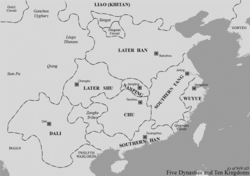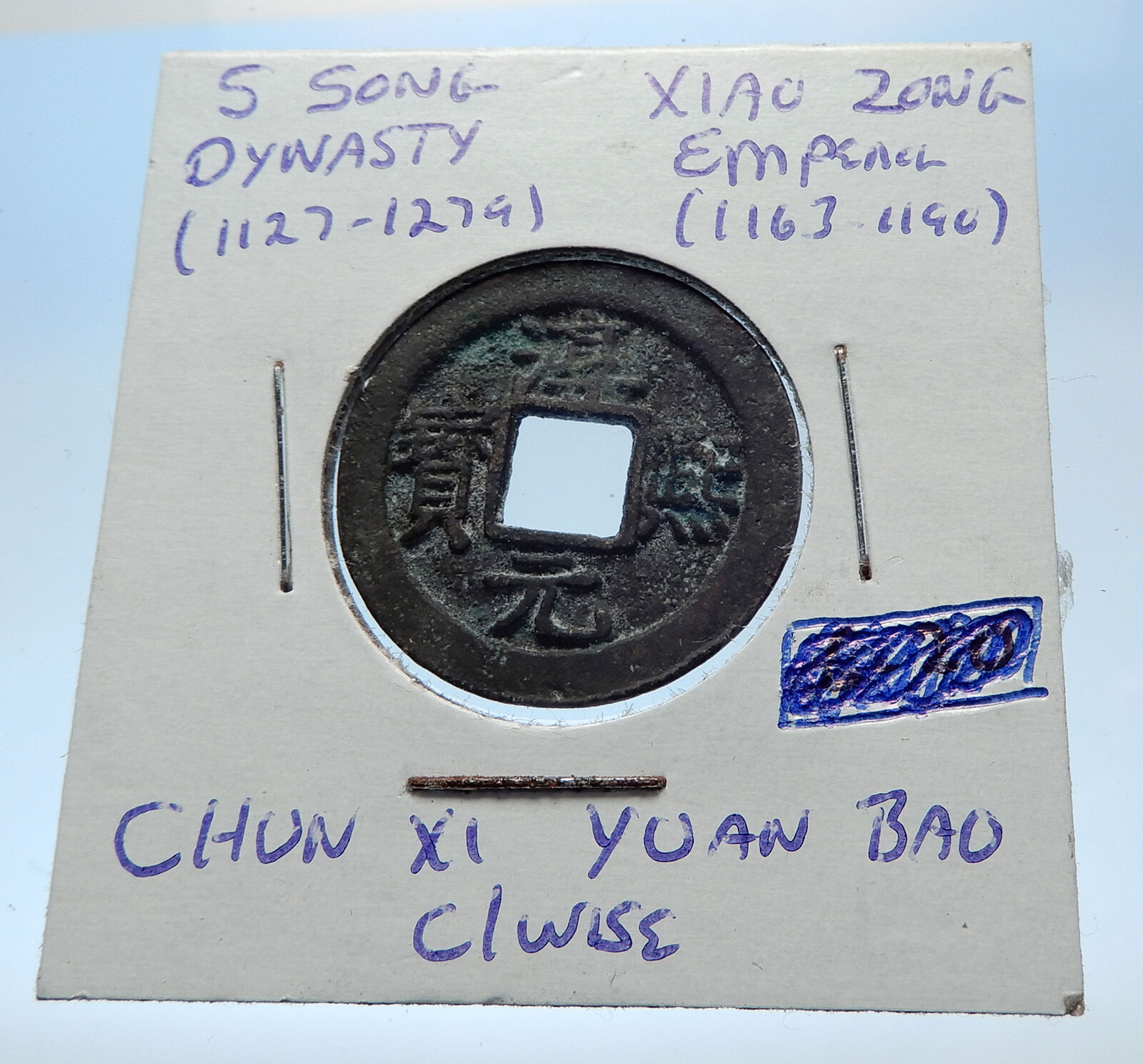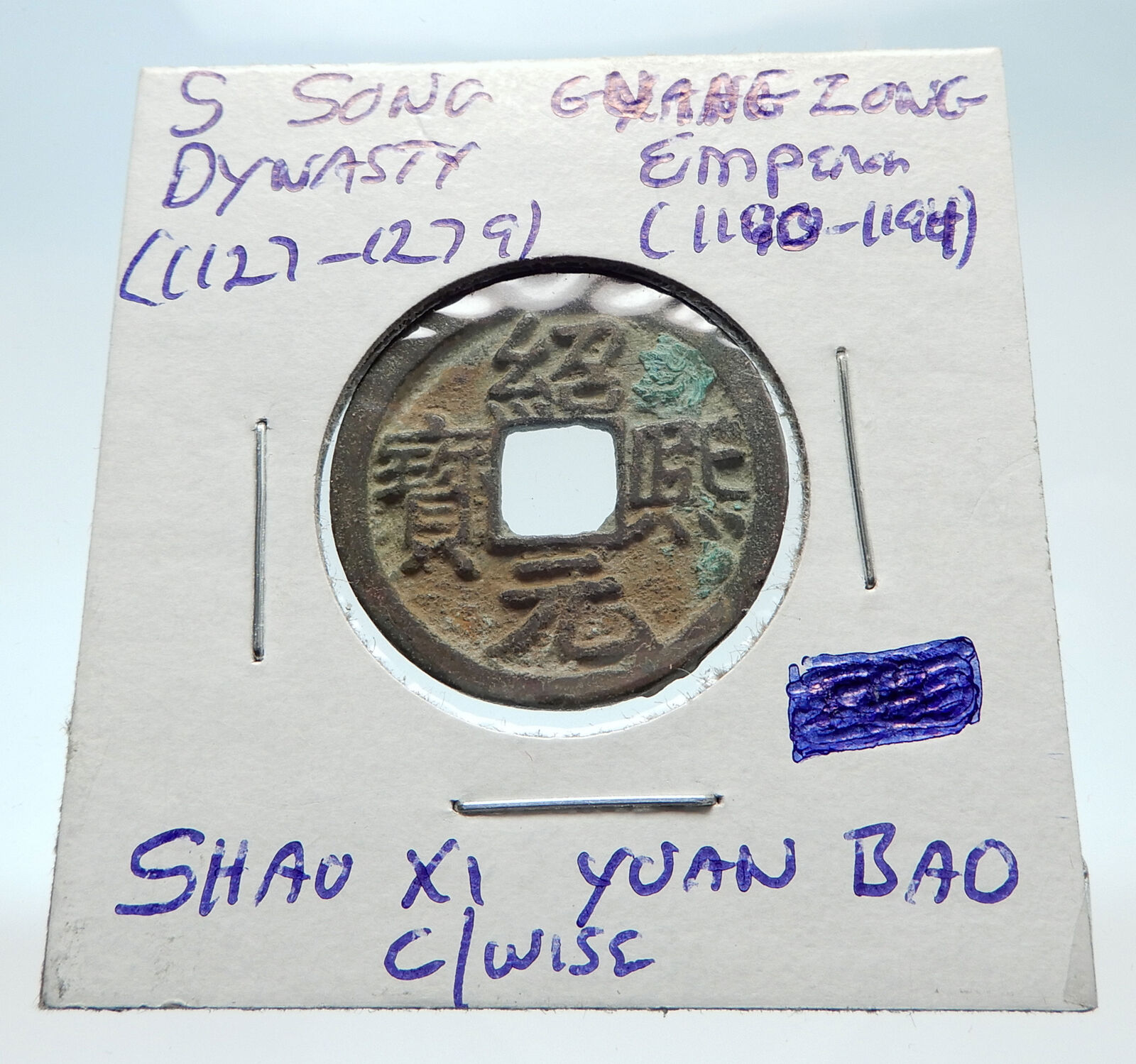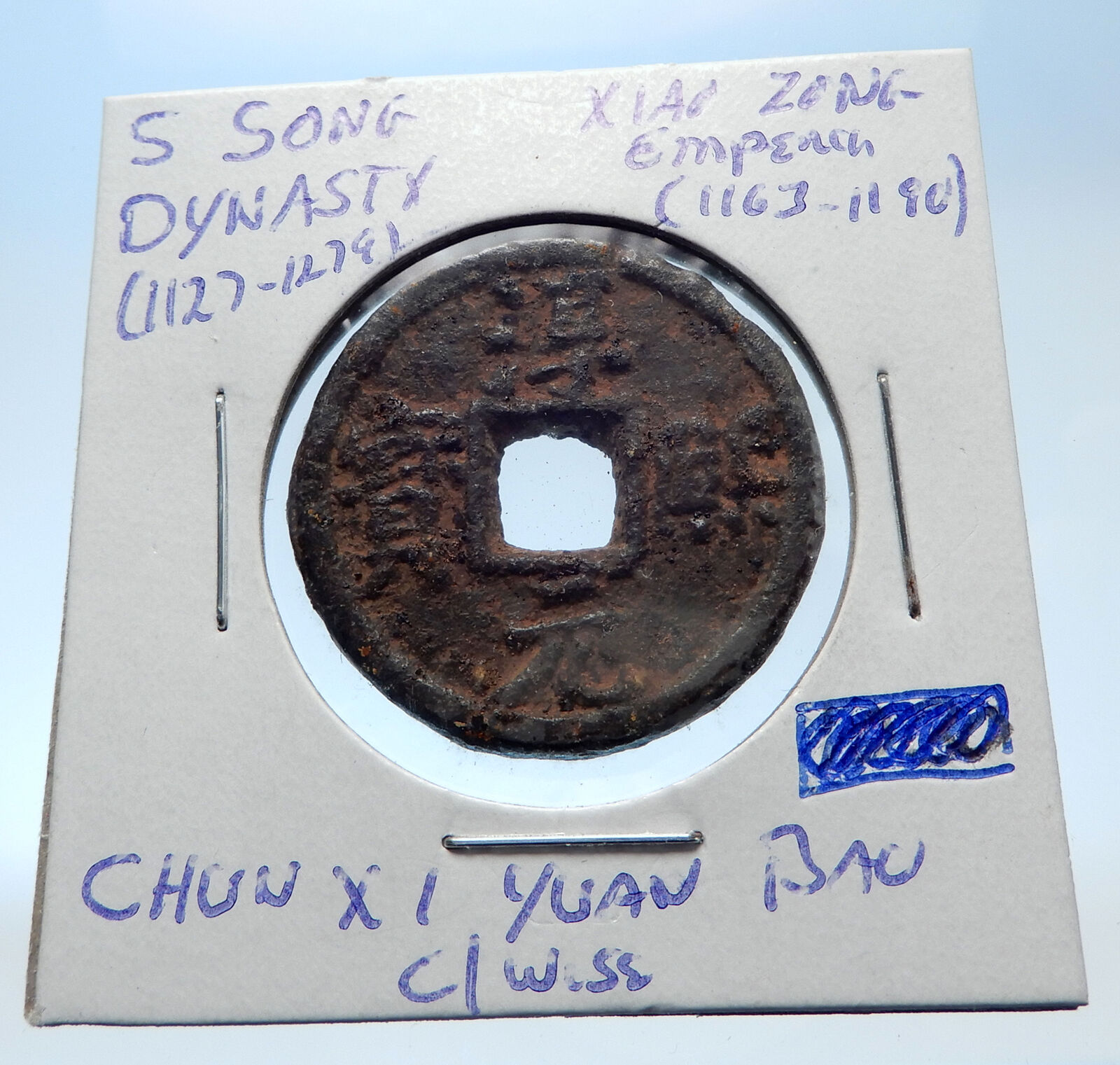|
China –
Five Dynasties – Later Han Dynasty (948-951 AD)
Emperor Gau Zu (947-948 AD)
Bronze Kai Yuan Tong Bao Cash Token 24mm, Struck 947-948 AD
Reference: H# 15.4
Chinese Symbols.
Wise, Dot below.
You are bidding on the exact item pictured, provided with a Certificate of Authenticity and Lifetime Guarantee of Authenticity.
 The Later Han (simplified Chinese: 后汉; traditional Chinese: 後漢; pinyin: Hòu Hàn) was founded in 947. It was the fourth of the Five Dynasties in imperial Chinese history, and the third consecutive Shatuo-led Chinese dynasty, however, other sources indicate that the Later Han emperors claimed patrilineal Han ancestry. It was among the shortest-lived of all Chinese regimes, lasting for slightly under four years before it was overcome by a rebellion that resulted in the founding of the Later Zhou. The Later Han (simplified Chinese: 后汉; traditional Chinese: 後漢; pinyin: Hòu Hàn) was founded in 947. It was the fourth of the Five Dynasties in imperial Chinese history, and the third consecutive Shatuo-led Chinese dynasty, however, other sources indicate that the Later Han emperors claimed patrilineal Han ancestry. It was among the shortest-lived of all Chinese regimes, lasting for slightly under four years before it was overcome by a rebellion that resulted in the founding of the Later Zhou.
Liu Zhiyuan was military governor of Bingzhou, an area around Taiyuan in present-day Shanxi that had long been a stronghold of the sinicized Shatuo. However, the Later Jin he served was weak and little more than a puppet of the expanding Khitan empire to the north. When the Later Jin finally did decide to defy them, the Khitan sent an expedition south that resulted in the destruction of the Later Jin.
The Khitan force made it all the way to the Yellow River before the emperor decided to return to his base in present-day Beijing, in the heart of the contentious Sixteen Prefectures. However, following constant harassment from the Chinese on the return route, he died of an illness in May 947. The combination of the fall of the Later Jin and the succession crisis among the Khitan resulted in a power vacuum. Liu Zhiyuan was able to fill that void and founded the Later Han.
Sources conflict as to the origin of the Later Han and Northern Han Emperors, some indicate Shatuo ancestry while another claims that the Emperors claimed patrilineal Han Chinese ancestry.
The Later Han was among the shortest-lived regimes in the long history of China. Liu Zhiyuan died the year following the founding of the dynasty, to be succeeded by his teenaged son. The dynasty was overthrown two years later when a Han Chinese named Guo Wei led a military coup and declared himself emperor of the Later Zhou.
Cash was a type of coin of China and East Asia, used from the 4th century BC until the 20th century AD. Originally cast during the Warring States period, these coins continued to be used for the entirety of Imperial China as well as under Mongol, and Manchu rule. The last Chinese cash coins were cast in the first year of the Republic of China. Generally most cash coins were made from copper or bronze alloys, with iron, lead, and zinc coins occasionally used less often throughout Chinese history. Rare silver and gold cash coins were also produced. During most of their production, cash coins were cast but, during the late Qing dynasty, machine-struck cash coins began to be made. As the cash coins produced over Chinese history were similar, thousand year old cash coins produced during the Northern Song dynasty continued to circulate as valid currency well into the early twentieth century.
In the modern era, these coins are considered to be Chinese “good luck coins”; they are hung on strings and round the necks of children, or over the beds of sick people. They hold a place in various superstitions, as well as Traditional Chinese medicine, and Feng shui. Currencies based on the Chinese cash coins include the Japanese mon, Korean mun, Ryukyuan mon, and Vietnamese văn.
|





 The Later Han (simplified Chinese: 后汉; traditional Chinese: 後漢; pinyin: Hòu Hàn) was founded in 947. It was the fourth of the Five Dynasties in imperial Chinese history, and the third consecutive Shatuo-led Chinese dynasty, however, other sources indicate that the Later Han emperors claimed patrilineal Han ancestry. It was among the shortest-lived of all Chinese regimes, lasting for slightly under four years before it was overcome by a rebellion that resulted in the founding of the Later Zhou.
The Later Han (simplified Chinese: 后汉; traditional Chinese: 後漢; pinyin: Hòu Hàn) was founded in 947. It was the fourth of the Five Dynasties in imperial Chinese history, and the third consecutive Shatuo-led Chinese dynasty, however, other sources indicate that the Later Han emperors claimed patrilineal Han ancestry. It was among the shortest-lived of all Chinese regimes, lasting for slightly under four years before it was overcome by a rebellion that resulted in the founding of the Later Zhou.




